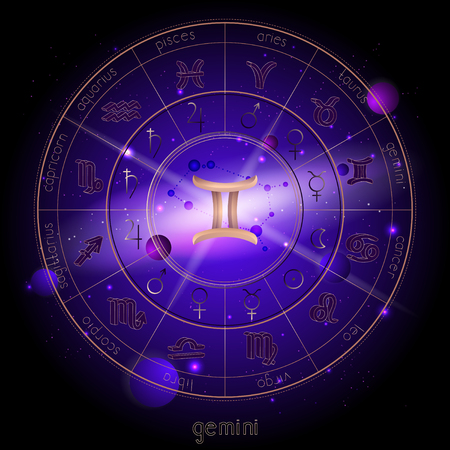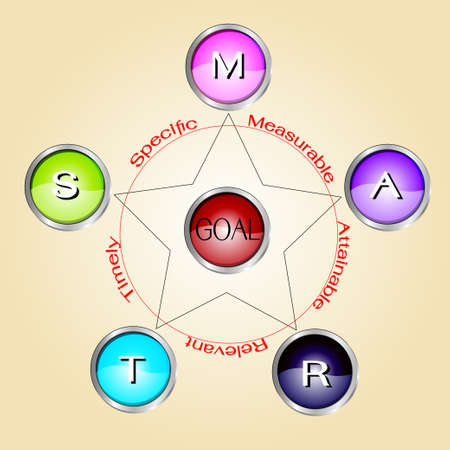1. Introduction to Western Astrology
Western astrology is a fascinating system that explores how the positions of the planets and stars at the moment of your birth can influence your personality, choices, and life path. Rooted in ancient traditions, Western astrology has evolved over centuries and remains a popular tool for self-discovery and personal growth, especially in the United States.
Historical Roots of Western Astrology
The origins of Western astrology trace back to ancient Babylon over 2,000 years ago, before spreading through Greece, Rome, and Europe. Early astrologers used celestial observations to predict events and understand human nature. Today’s Western astrology primarily relies on the tropical zodiac—a system dividing the sky into twelve equal parts based on the Sun’s apparent movement throughout the year.
Cultural Significance in the United States
Astrology became especially popular in the U.S. during the 20th century, with horoscopes appearing in newspapers and magazines. Many Americans use astrology as a way to gain insights into themselves, their relationships, and even career choices. It’s common to discuss your “sign” (meaning your Sun sign) at social gatherings or check daily horoscopes for fun guidance.
Common Ways Americans Use Birth Charts
| Usage | Description |
|---|---|
| Self-Discovery | Understanding strengths, weaknesses, and motivations by exploring chart placements. |
| Relationship Insight | Comparing charts (synastry) to explore compatibility with friends or partners. |
| Personal Growth | Identifying patterns or challenges and using them as tools for self-improvement. |
| Career Guidance | Looking at planetary influences to find fulfilling job paths or work styles. |
The Role of Birth Charts
A birth chart—also called a natal chart—is a personalized map showing where each planet was located at the exact time and place you were born. This unique chart serves as a blueprint for your potential and challenges, offering clues about your emotional needs (Moon), communication style (Mercury), love life (Venus), and much more. By learning how to read your birth chart, you can uncover deeper layers of yourself that might not be obvious on the surface.
2. Decoding the Components of a Birth Chart
Understanding the Basics: What Makes Up a Birth Chart?
If you’re new to astrology, reading your birth chart might feel like decoding a secret language. Don’t worry—it’s easier than it seems once you break it down into its basic parts. A Western astrological birth chart is a circular map that shows where the planets were in the sky at the exact moment and place you were born. Let’s look at the four main components: zodiac signs, planets, houses, and aspects.
Zodiac Signs: The Personality Flavors
The zodiac signs are like the “characters” in your birth chart story. There are 12 zodiac signs, each with its own style and energy. In the United States, you’ll often hear people casually refer to their “sign” as their Sun sign—like saying “I’m a Leo!” or “She’s such a Virgo.” Here’s a quick cheat sheet:
| Zodiac Sign | Main Traits (in plain English) | Famous Americans |
|---|---|---|
| Aries | Bold, energetic, competitive | Lady Gaga |
| Taurus | Reliable, patient, loves comfort | Dwayne “The Rock” Johnson |
| Gemini | Curious, talkative, adaptable | Kanye West |
| Cancer | Caring, sensitive, home-loving | Ariana Grande |
| Leo | Confident, creative, loves attention | Barack Obama |
| Virgo | Organized, practical, detail-oriented | Beyoncé |
| Libra | Sociable, fair-minded, peace-loving | Will Smith |
| Scorpio | Mysterious, passionate, intense | Katy Perry |
| Sagittarius | Adventurous, optimistic, freedom-loving | Taylor Swift |
| Capricorn | Disciplined, ambitious, responsible | Michelle Obama |
| Aquarius | Innovative, independent, friendly to all kinds of people | Ellen DeGeneres |
| Pisces | Dreamy, artistic, empathetic | Rihanna |
The Planets: Your Personal Influencers
The planets in your chart represent different parts of your personality or life experiences. Each planet has its “job”—for example:
- The Sun: Your core self and identity (think of it as your “main character” energy)
- The Moon: Your emotions and inner world (how you react when you’re alone or with close friends)
- The Mercury: How you think and communicate (your texting style or how you chat in class or at work)
- The Venus: What you love and how you relate to others (your dating style or what makes you feel cozy at home)
- The Mars: How you take action and express anger or drive (your motivation for sports or projects)
An Example: Venus in Cancer vs. Venus in Sagittarius (American Style)
- If your Venus is in Cancer: You might love spending weekends having family barbecues at home.
- If your Venus is in Sagittarius: You may prefer spontaneous road trips across Route 66 or exploring national parks.
The Astrological Houses: Where Life Happens
Your birth chart is divided into 12 sections called “houses.” Each house stands for an area of life—like career, relationships, or money. Think of them as rooms in your personal mansion:
| House Number | Main Theme | American Example |
|---|---|---|
| 1st House | Your image & first impressions | Your Instagram profile or first day at college |
| 2nd House | Your money & values | Your paycheck or shopping habits on Black Friday |
| 7th House | Your close relationships | Your marriage or business partnerships |
| 10th House | Your career & reputation | Your dream job or LinkedIn profile |
The Aspects: How Everything Connects Together
The planets in your chart don’t just sit alone—they form angles with each other called “aspects.” These show how different parts of your personality work together—or sometimes clash! For example:
- If your Sun and Moon are working well together (a “trine”), it’s like having both school spirit and family support during graduation.
- If your Mars and Venus are clashing (“square”), it might mean you want to ask someone out but feel nervous about rejection.
A Quick Recap Table: Core Birth Chart Elements
| Element | What It Means |
|---|---|
| Zodiac Signs | Your overall style & vibe—how you express yourself |
| Planets | Different parts of who you are—like your emotions or motivation |
| Houses | Areas of life—where events happen for you |
| Aspects | How all these pieces interact—teamwork or challenges inside yourself |
Understanding these basics will help you start seeing how your unique birth chart paints a picture of who you are—and why certain things just feel right (or tricky) for you!

3. Calculating Your Birth Chart: Tools and Tips
Before you can explore the secrets of your Western astrological birth chart, you’ll need to calculate it accurately. Thankfully, modern technology makes this process quick and easy—even if you’re new to astrology. This section will walk you through finding your essential birth details and using popular online tools to generate your chart.
Gathering Accurate Birth Data
Your birth chart is like a cosmic snapshot taken at the exact moment and place you were born. To get the most precise reading, make sure you have the following information:
| Detail Needed | Why It Matters |
|---|---|
| Birth Date | The sun, moon, and planets change positions daily—your date sets the foundation of your chart. |
| Birth Time | The exact time (ideally down to the minute) determines your Ascendant (rising sign) and house placements. |
| Birth Place | Your location affects planetary positions due to time zones and latitude/longitude. |
Tips for Finding Your Birth Time
- Check your official birth certificate—it’s usually the best source.
- Ask family members or caregivers if records are unavailable.
- If you’re unsure of the exact time, even a close estimate can help, but be aware that some chart details might shift within a few minutes.
Popular Online Birth Chart Calculators
You don’t need to be a math whiz or have special software—there are several trusted websites that will generate your full birth chart for free. Here are some favorites among astrology fans in the United States:
| Website | Main Features | User Experience |
|---|---|---|
| Astro.com (Astrodienst) | Highly detailed charts; wide range of interpretations; customizable options. | User-friendly; in-depth results for all levels. |
| Cafe Astrology | Simple chart calculator; clear explanations; beginner-friendly guides. | Easy navigation; great for first-timers learning basics. |
| Astro-Seek.com | Diverse chart styles; interactive tools; personalized reports. | Straightforward interface; lots of extras for deeper exploration. |
How to Use an Online Calculator
- Visit one of the recommended sites above.
- Enter your full birth date, exact birth time, and city/state/country of birth.
- Select “Calculate” or “Submit” to view your birth chart wheel and a list of planet placements.
- Save or print your chart for reference as you continue learning about its meanings in later sections.
4. Understanding Your Sun, Moon, and Rising Signs
If you’re just starting to explore your Western astrological birth chart, you’ve probably heard people talk about the “Big Three”: your Sun sign, Moon sign, and Rising sign (also called Ascendant). In American astrology circles—whether it’s a meme on Instagram or conversations at coffee shops—the Big Three are considered the building blocks of your personality profile. Let’s break down what each one means, how they interact, and why they matter for understanding yourself on a deeper level.
What Are the Big Three?
| Placement | What It Represents | American Pop Culture Example |
|---|---|---|
| Sun Sign | Your core self, ego, life force; what drives you at your center | Harry Potter (as a Leo: brave and proud leader) |
| Moon Sign | Your emotional world, instincts, how you nurture and feel safe | Taylor Swift (Cancer Moon: deeply emotional in her songwriting) |
| Rising Sign | Your social mask, first impressions, style; how others see you | Ellen DeGeneres (Aquarius Rising: friendly and quirky public image) |
How the Big Three Shape Who You Are
Think of your Big Three like the main ingredients in your favorite burger from an American diner. The Sun sign is the beef patty—the core of who you are. The Moon sign is like the cheese and toppings—your inner flavor and feelings. The Rising sign is the bun—how you present yourself to the outside world.
1. Sun Sign: Your Core Personality
Your Sun sign shows where you shine brightest. For example, if your Sun is in Gemini, you’re likely chatty, curious, and love sharing ideas—think of a lively podcaster or morning show host. This is often the zodiac sign you check in horoscopes and what most Americans refer to when they ask, “What’s your sign?” at a party.
2. Moon Sign: Your Emotional Landscape
The Moon sign reflects how you process feelings and seek comfort. If your Moon is in Scorpio, you might have intense emotions beneath the surface—even if you seem chill on the outside. Many Americans relate their Moon sign to their “real self” that only close friends or family get to see.
3. Rising Sign: Your Outward Vibe
The Rising sign describes your social vibe and physical appearance. If you have Capricorn Rising, people may think you’re serious or ambitious at first glance—even if you’re a total goofball with friends. It’s like your personal brand or the way people describe you before really knowing you.
Putting It All Together: A Celebrity Example
Let’s take Beyoncé as an example:
- Sun in Virgo: Hardworking, perfectionist (her attention to detail in performances)
- Moon in Scorpio: Deeply private emotions, passionate (her mysterious persona off-stage)
- Libra Rising: Charming and graceful public image (her ability to win over fans worldwide)
A Quick Reference Table for Your Big Three:
| Your Placement | Main Influence | Everyday Example |
|---|---|---|
| Sun Sign | Your basic identity & goals | Your go-to attitude at work/school |
| Moon Sign | Your emotional reactions & needs | How you handle stress or comfort yourself after a tough day |
| Rising Sign | Your outer shell & first impression | The vibe people get when they meet you at a BBQ or new job orientation |
Understanding these three signs gives Americans—and anyone new to astrology—a simple yet powerful way to start decoding themselves and their relationships.
5. Applying Birth Chart Insights to Your Daily Life
Understanding How Astrology Can Support Everyday Decisions
Knowing your Western astrological birth chart isn’t just about learning your Sun, Moon, and Rising signs. It’s a practical tool that can help you navigate your daily life in ways that feel real and helpful. Whether you’re looking for ways to grow personally, improve relationships, or make confident career choices, your birth chart can offer unique insights. Let’s break down how to use this knowledge in familiar American settings.
Personal Growth: Building Better Habits
Your birth chart highlights both your strengths and challenges. For example, if your Mars is in Virgo, you might have a natural talent for staying organized but sometimes get stuck on the details. Knowing this, you could try setting realistic goals for yourself—like using a planner app to keep track of tasks without getting overwhelmed by perfectionism.
| Birth Chart Placement | Practical Tip | Everyday Example |
|---|---|---|
| Sun in Leo | Practice healthy self-expression | Sign up for an improv class or lead a presentation at work |
| Moon in Cancer | Nurture your emotional side | Create cozy spaces at home or host a family dinner |
| Mars in Aries | Channel energy productively | Try out a new sport or take morning jogs before work |
Relationship Harmony: Improving Communication and Understanding
Your Venus and Mercury signs say a lot about how you connect with others. For instance, Venus in Gemini loves playful conversation, while Venus in Taurus prefers comfort and stability. By understanding not only your own placements but those of your friends, partner, or family members, you can adapt your communication style for better harmony.
Relatable Example:
- If you know your partner has Mercury in Capricorn (practical and reserved), avoid overwhelming them with too many ideas at once. Instead, stick to the point and offer solutions.
- If your best friend has Venus in Aquarius (values independence), give them space when they need it rather than taking distance personally.
Career Decisions: Playing to Your Strengths at Work
Your Midheaven (MC) sign and the placement of Saturn often reflect what kind of work environment suits you best. For example, if your MC is in Libra, teamwork and creative collaboration might be where you shine. If Saturn is in Sagittarius, setting long-term educational goals could lead to success.
| Chart Element | Workplace Strength | How to Apply It | American Workplace Example |
|---|---|---|---|
| Midheaven in Cancer | Caring leadership, empathy | Pursue roles that involve mentoring or team support | HR specialist or school counselor positions |
| Saturn in Gemini | Communication skills, adaptability | Tackle jobs that require writing or multitasking | Content creator or project manager roles in a tech startup |
| Mars in Capricorn | Persistence, ambition | Set clear career milestones and stick to them even during setbacks | Pursuing promotions within a corporate office environment like finance or law firms |
Tying It All Together: Making Astrology Work for You Every Day
The more familiar you become with the patterns in your birth chart, the easier it is to recognize opportunities for growth and fulfillment. Whether it’s choosing date night activities based on shared Moon signs or preparing for a job interview by channeling your rising sign’s confidence, astrology can be a supportive guide as you move through everyday American life.


